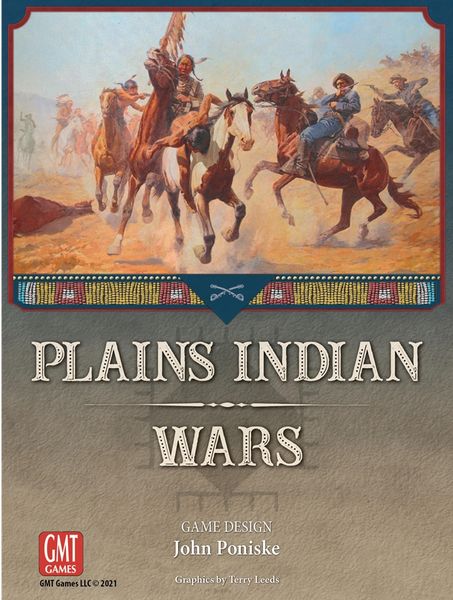Plains Indian Wars (2022) Board Game
The Plains Indian Wars were a series of conflicts between Native American tribes and the United States government that took place between the early 1850s and the late 1890s. These wars were fueled by disputes over land, resources, and cultural differences. The Native American tribes of the Great Plains, such as the Lakota, Cheyenne, and Arapaho, fought against encroaching settlers and the U.S. Army in an effort to defend their way of life and traditional hunting grounds.
Game Components of Plains Indian Wars
How To Setup Plains Indian Wars
Setup involves placing the game board, which maps the Great American Plains between the Mississippi River, the Rockies, the Canadian border, and the Mexican border. Each major faction (Northern Plains Tribes (NPT), Southern Plains Tribes (SPT), US Cavalry, and Settlers) has its own deck boxes, cube reserve boxes, and custom dice. Players draw faction discs from a bag to determine the random turn order. Each major faction starts with a hand of three cards.
Gameplay Mechanics and Game Objective
– US Player: Earns points for getting Wagon Trains into the Rockies, controlling NPT/SPT areas, and completing the railroad.
– Indian Player: Earns points for capturing Wagon Trains, eliminating US Cavalry and Wagon Train cubes, and controlling NPT/SPT and Enemies regions.
Player Experience
**Plains Indian Wars** can be played by 1-4 players, but it shines best as a two-player game. The game takes approximately 60-90 minutes to complete. Players must strategically use their faction’s strengths while minimizing weaknesses. For example, the US Cavalry has significant firepower but few cubes, while Settlers have many cubes but little firepower. The game’s asymmetric factions create a balanced but challenging experience, reflecting the historical imbalance between the US and Native American forces.
Pros
Cons
Personal Thoughts on Plains Indian Wars
**Plains Indian Wars** is a game for those interested in historical wargames and strategic gameplay. It is particularly suited for players who enjoy asymmetric faction play and the challenge of balancing strengths and weaknesses. While it does not shy away from the harsh realities of the historical conflict, it manages to “teach without preaching” and encourages players to think critically about the broader strategies involved. However, it may not be the best fit for players looking for a more balanced or less complex wargaming experience.
We are supported by our audience. When you purchase through links on our site, we may earn an affiliate commission, at no extra cost for you. Learn more.

